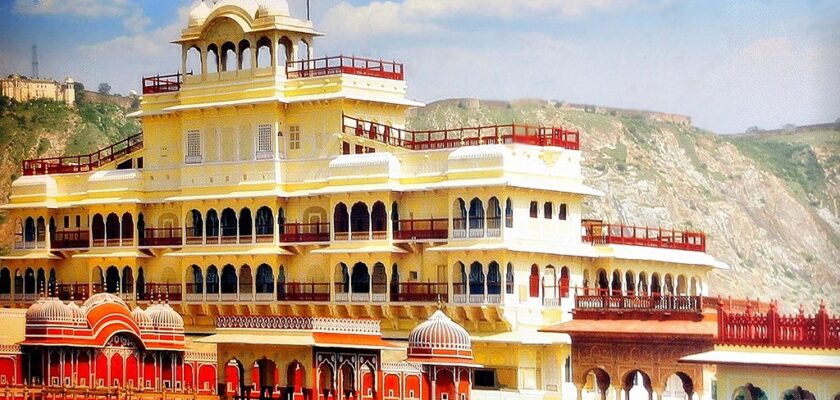City Palace of Jaipur
The City Palace of Jaipur is located in the heart of the Old City and is a complex of courtyards, gardens and buildings. The outer wall was built by Jai Singh, but after that, the palace was expanded and modified over several centuries. Despite the gradual development, overall, the palace is a striking combination of Rajasthani and Mughal architecture.
.
The price of the entrance ticket includes a tour of Jaigarh Fort (located well above Amber Fort). The ticket is valid for two days.
.Indians/foreigners including video and audio guide Rs. 75/300,videography Rs 200,Chandra Mahal tour Rs. 2500;9.30 am – 5 pm
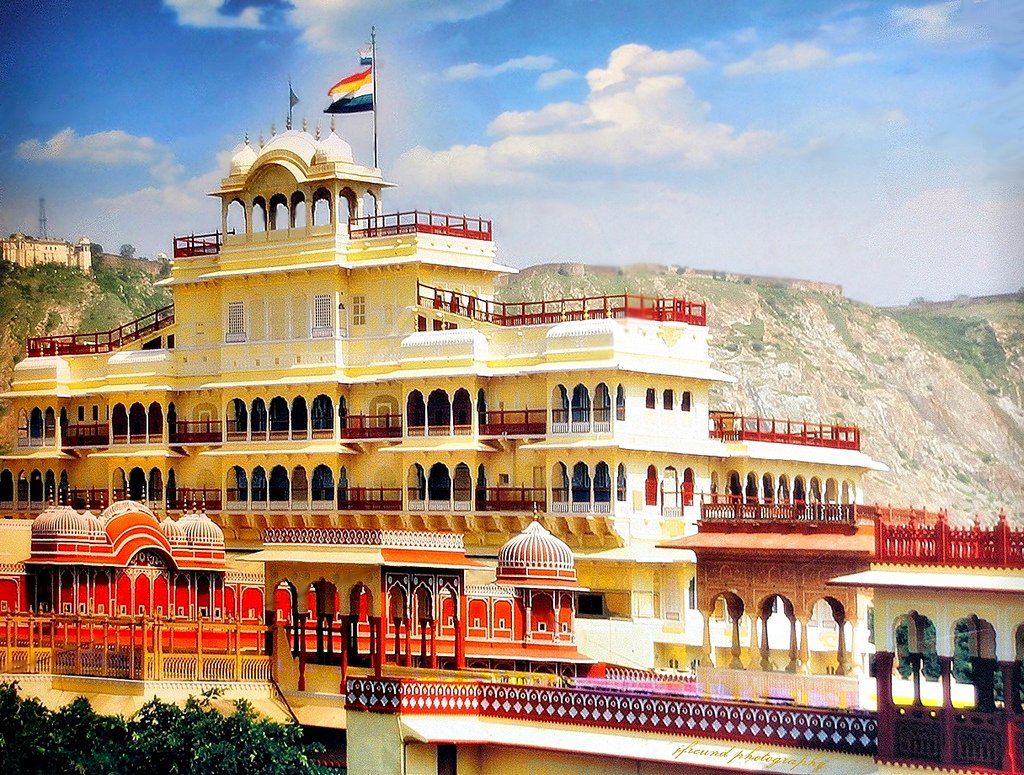
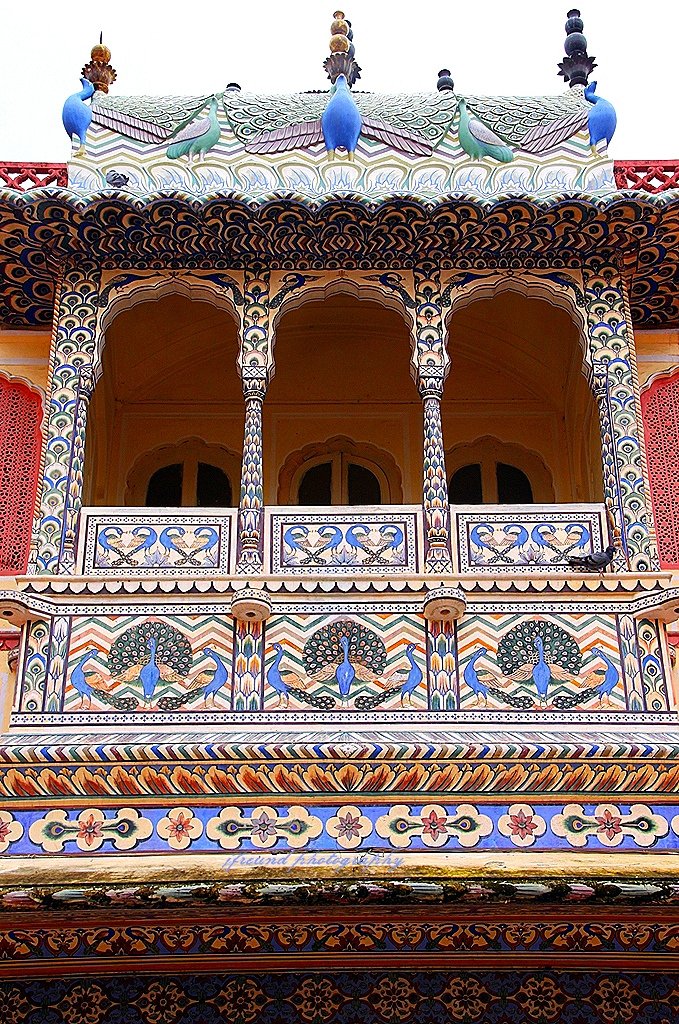
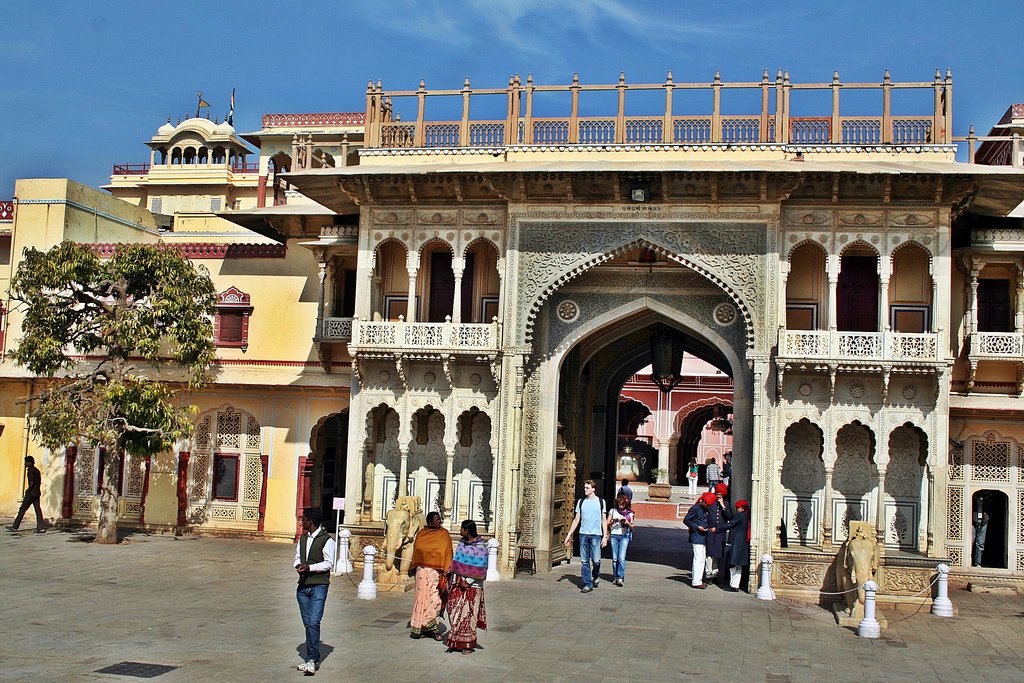
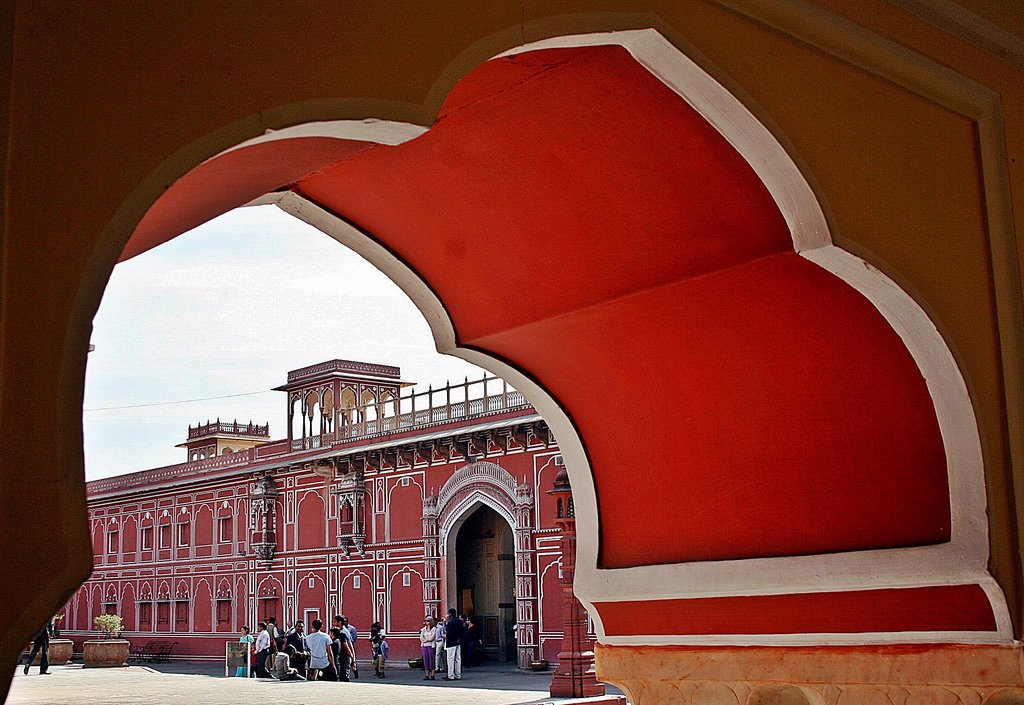
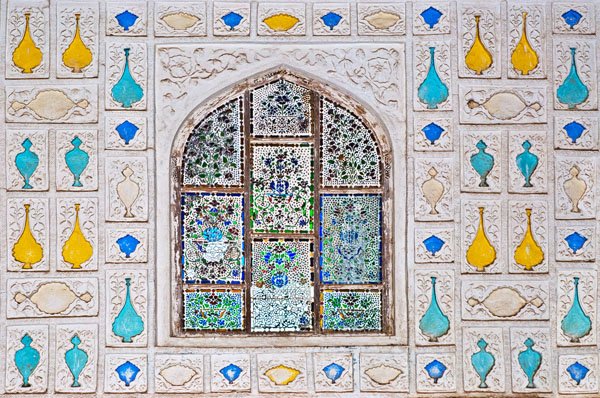
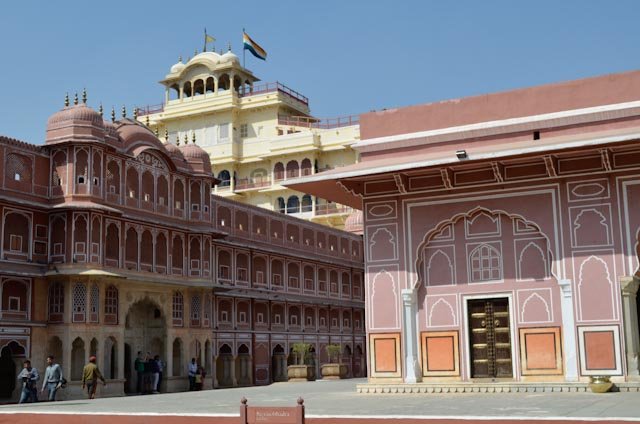
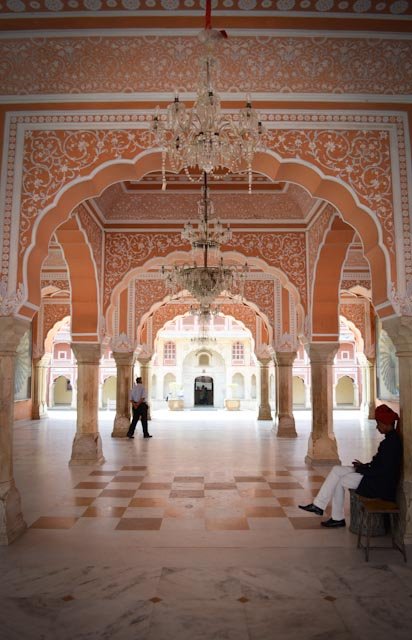
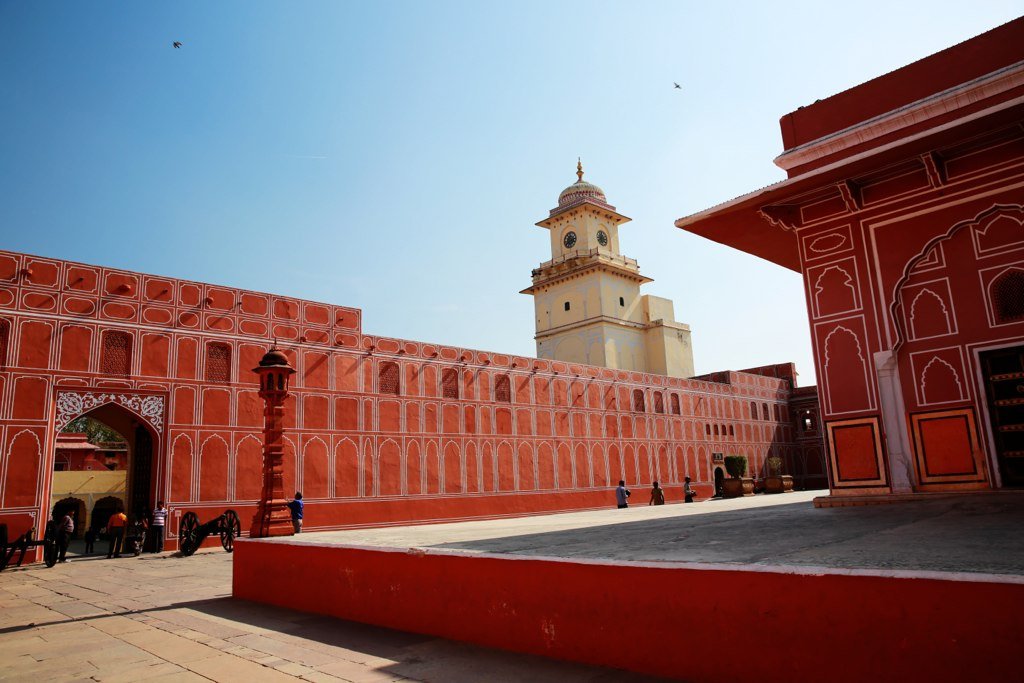
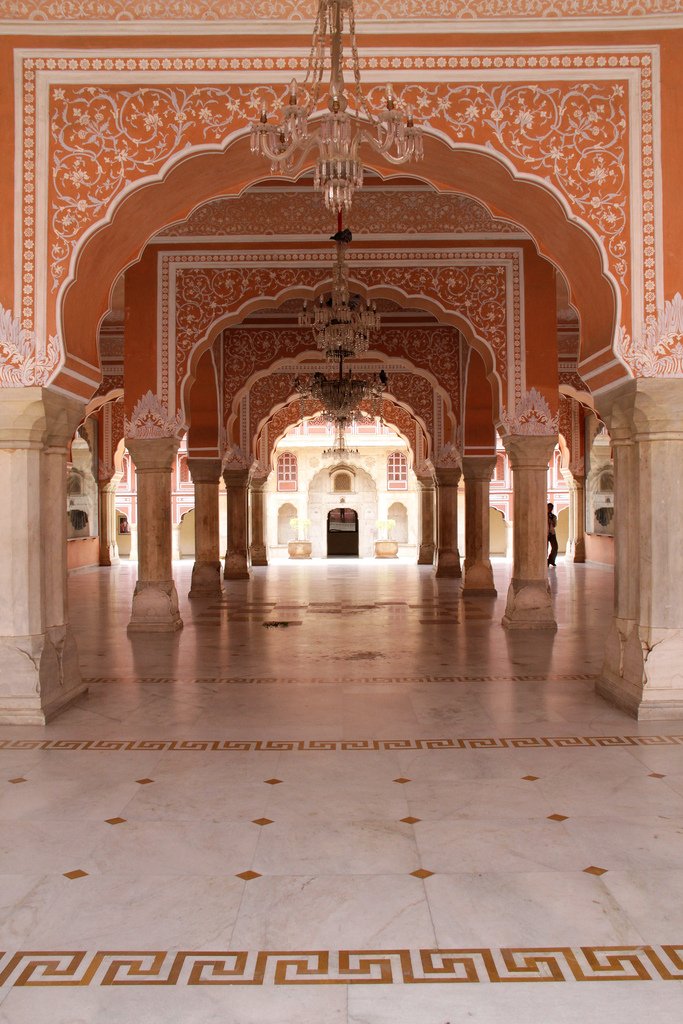
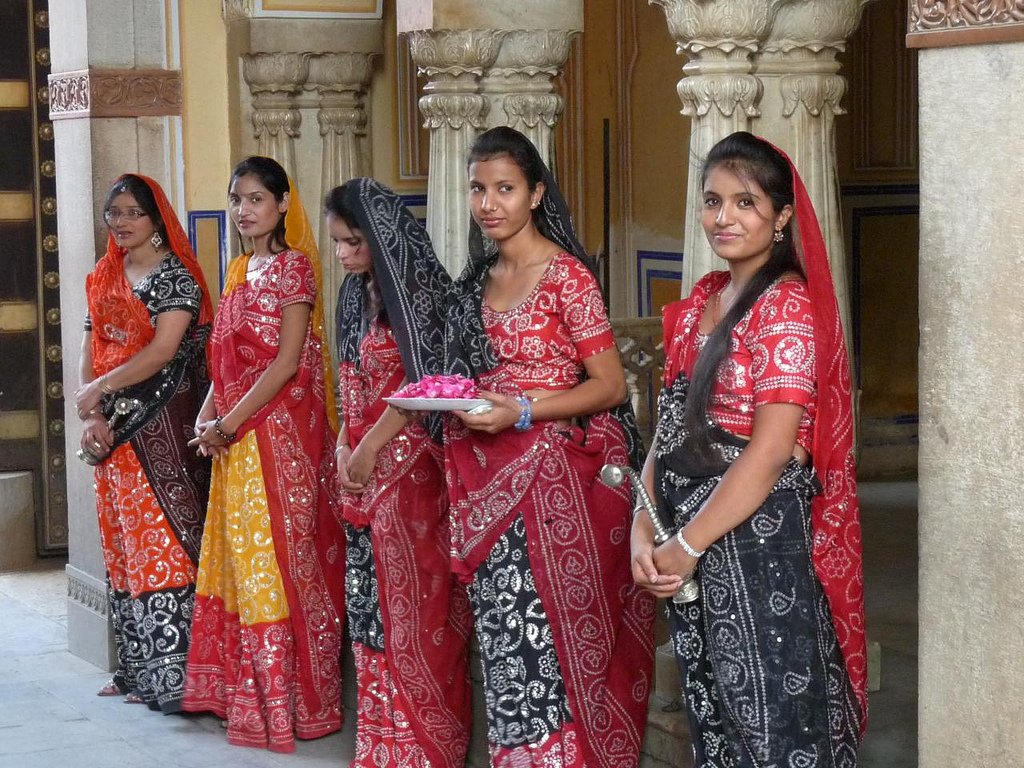
- Mubarak Mahal
- Diwan-e-Khas (Sarvatobhaora)
- Diwan-e- Am
- Armory
- Pitam Niwas Chowk and Chandra Mahal
- Jantar-Mantar
Mubarak Mahal
Entering the City Palace of Jaipur through Virendra Gate, you will see the Mubarak Mahal (Guest Palace), built in the late 19th century for Maharaja Madho Singh II to receive dignitaries. This building with many arches and columns, combining Islamic, Rajput and European styles, was designed by architect Sir Swinton Jacob. The building is now part of the Maharaja Sawai Mansingh II Museum, which houses a collection of royal costumes and fine shawls, including pashmina (woolen shawls) from Kashmir. One remarkable exhibit is the spacious robes of Sawai Madho Singh I. He is said to have been a two-meter tall handsome man, 1.2 meters in girth and weighed 250 kg.
.Diwan-e-Khas (Sarvatobhaora)
Located between the Armory and the Diwan-e-Am art gallery, it is located in a courtyard called Sarvatobhadra in Sanskrit. At its center is a pink and white marble-paved gallery that was used as the Diwan-i-Khasa (private audience hall). This is where the maharajas consulted with their ministers. You will see two huge silver vessels 1.6 meters high, which are considered the largest silver objects in the world. Maharaja Madho Singh II, as a devout Hindu, used these vessels to carry the sacred water of the Ganges to England.
.Diwan-e-Am
The opulent Diwan-e-Am (Hall for Public Audiences) houses an art gallery. Among its exhibits is a copy of the entire Bhagavad Gita (Bhagavad Gita), written in very small script, and miniatures of other sacred Hindu scriptures, which are so small that they were easily hidden when the Mughal fanatic Aurangzeb tried to destroy the sacred texts.
>Armory
Anand Mahal Sileg Khana is a maharani palace that serves as the Armory. It houses the finest collection of weapons in the country. Many of the exhibits have exquisite engravings and gems that do not match well with the horrific purposes in which these weapons were used.
.Pitam Niwas Chowk and Chandra Mahal
In the inner courtyard of the palace is the Pitam Niwas Chowk. It has four magnificent gates that symbolize the seasons. The Peacock Gate depicts autumn with zigzag patterns and peacock motifs – around the entrance are five beautiful repeating bas-reliefs of a peacock in all its feathered splendor.
.In addition, the chowk (square) has a private palace, the Chandra Mahal, which still serves as the residence of descendants of the royal family and parts of which can be toured on a 45-minute tour (Rs. 2,500).
.Джантар-Мантар
Indians/foreigners Rs. 20/100, including an optional audio guide in Hindi or English Rs. 200/250;9.00-16.30
Adjoining the City Palace is Jantar Mantar, an observatory laid out by Jai Singh in 1728 and resembling a collection of strange sculptures. The name comes from the Sanskrit yanta mantr, “instrument for calculating values”. It was listed as a World Heritage Site of India in 2010.
Each structure at Jantar Mantar has a specific purpose – such as measuring star positions, altitude and azimuth, and calculating eclipses. It’s worth paying for a half-hour or hour-long guided tour if you want to learn how each of these amazing instruments worked.
>